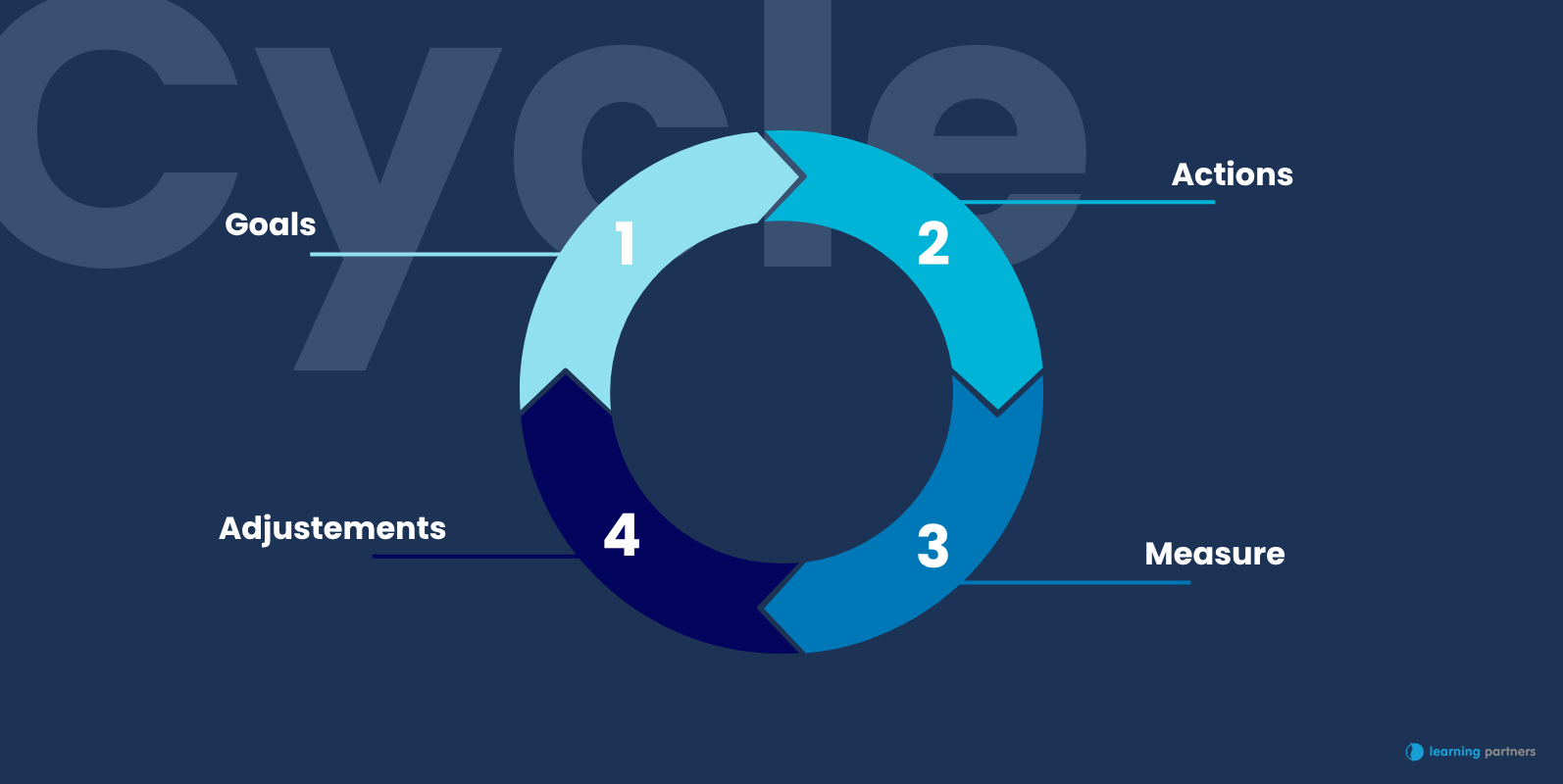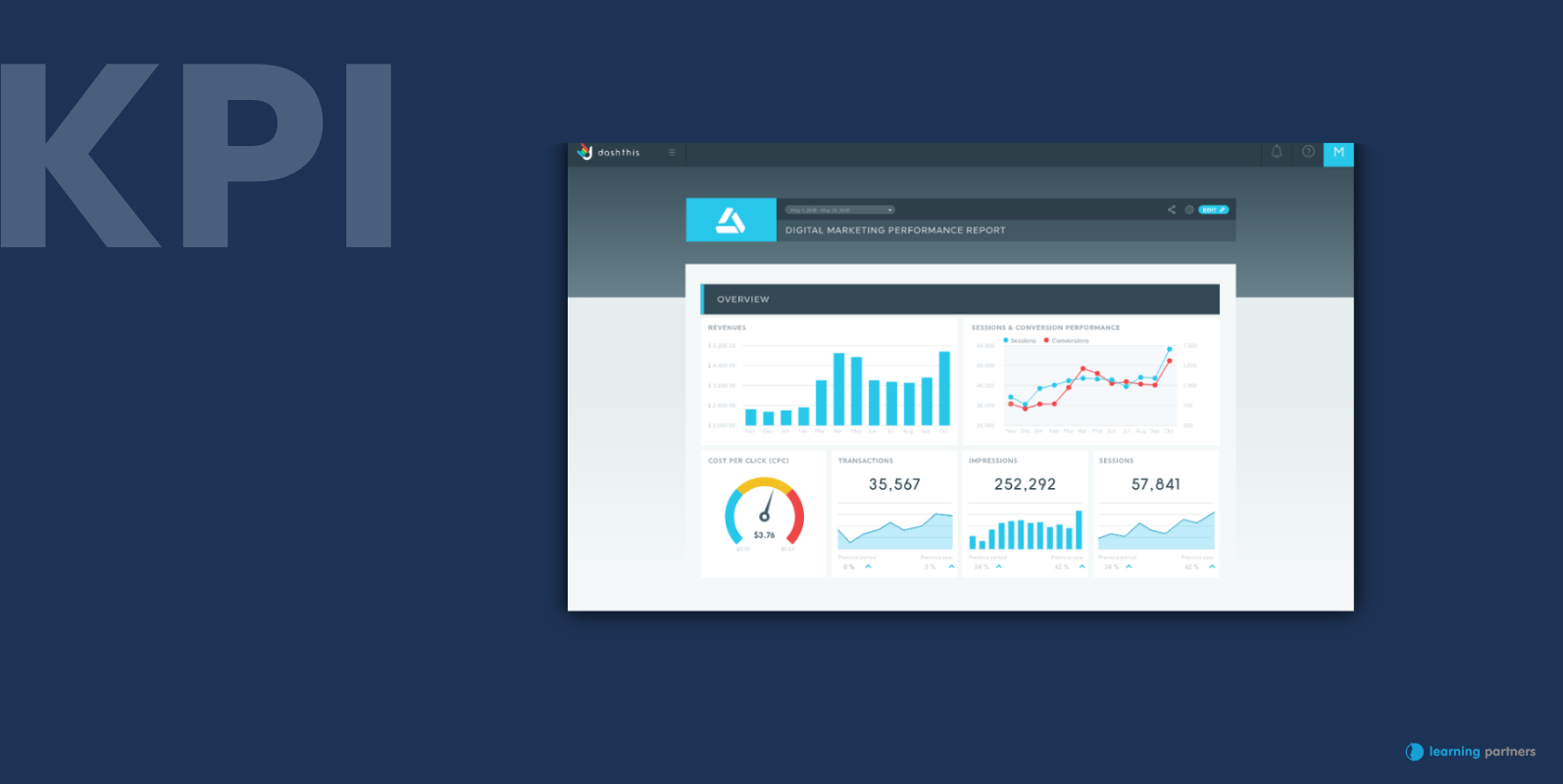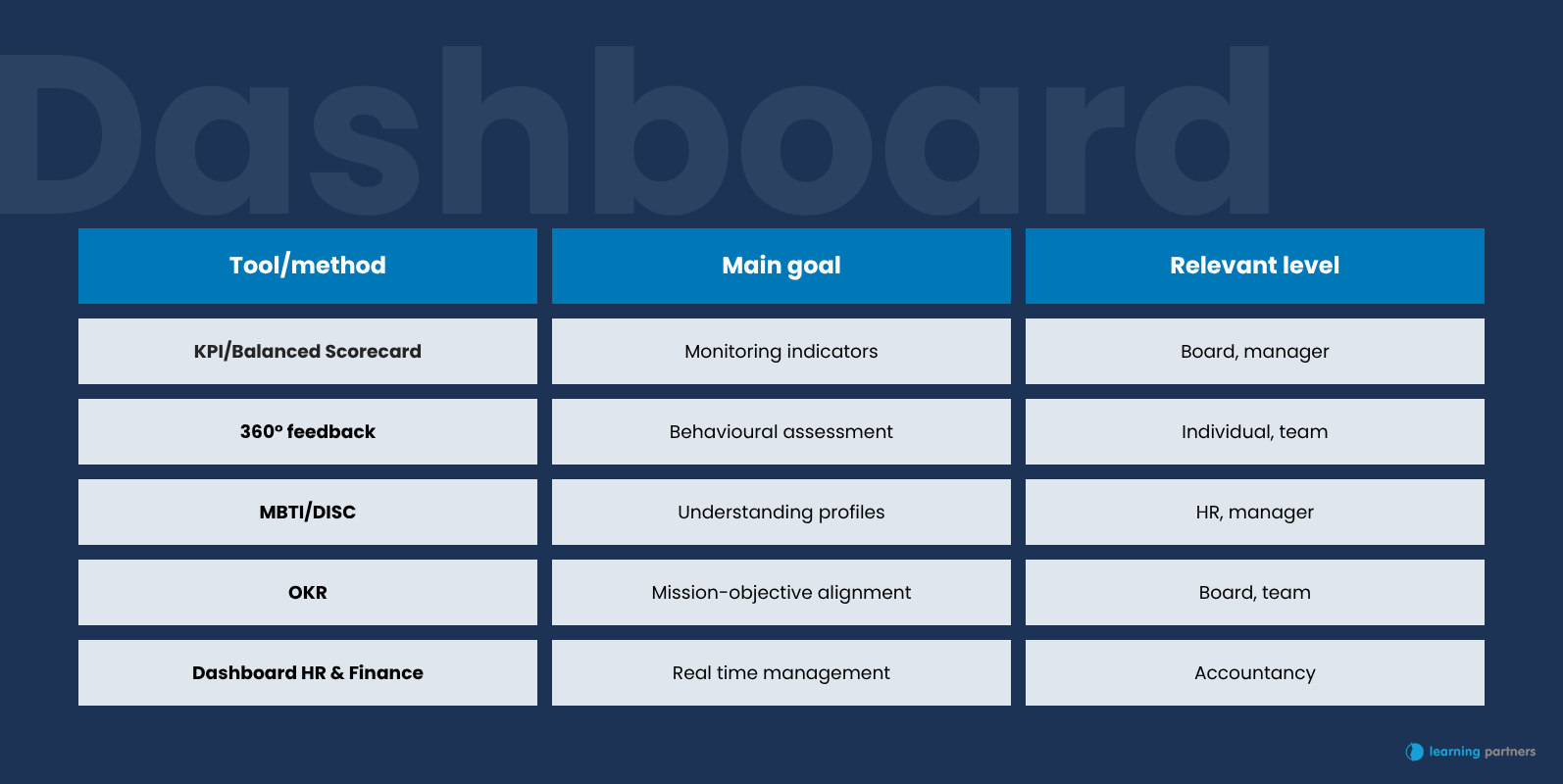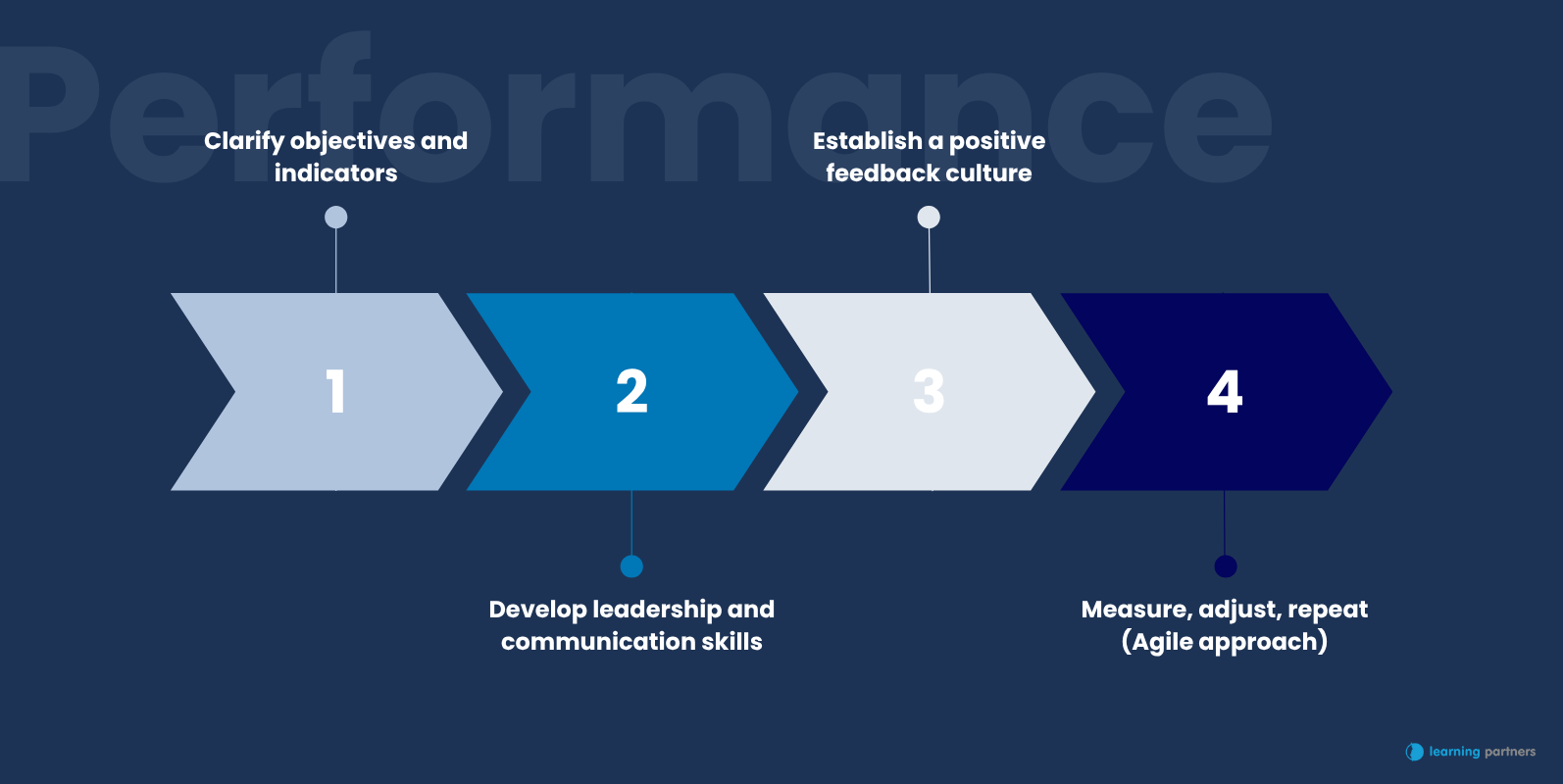The performance management is today a strategic challenge for companies faced with an ever-changing market. How to maintain a high level of corporate performanceWhat is the best way to do this, while adapting to economic, human and technological requirements? This article answers this essential question.
In concrete terms performance management refers to the set of practices aimed at aligning individual, collective and organizational objectives to create a sustainable dynamic of results. It’s not just about assessment, but also about proactively manage proactively usingperformance indicators (KPIs), d’performance management tools and operational and strategic management methods.
Here you’ll find a clear definition of the concept, its key issues, the main levers for action, and an overview of the tools for implementing it effectively. Whether you’re an executive, HR director or manager, this article will provide you with a structured vision and concrete suggestions for integrating a sustainable performance in your organization.
Our aim? To help you understand the mechanisms of performance managementso that you can apply it more effectively on a day-to-day basis, and turn it into a real lever for transformation.
What is performance management?
The performance management is the set of practices that transform strategy into measurable, sustainable results. It is based on HR, financial and operational processes, and places people at the heart of success.

A central concept for modern organizations
In a context where competition and social expectations are constantly changing, performance performance management is becoming the compass of management: it guides priorities, sets the pace for action plans, and secures the investment of stakeholders.
The difference between individual and collective performance
- Individual Individual: based on each employee’s contribution to his or her own objectives.
- Collective Collective: it depends on the sum (and above all the alignment) of individual performances around a shared vision.
Why is performance management strategic?
Benefits for the company :
- Alignment of objectives and resources
- Faster, data-driven decisions
- Greater team commitment
- Reducing hidden costs
Risks of unclear steering :
- Turnover and disengagement
- Lower productivity
- Long-term loss of competitiveness
To find out more, Harvard Business Review shows that companies with a robust performance system outperform their sector by an average of 30%. Consult Harvard Business Review
Performance management tools you need to know
Discover our performance management tools at Learning Partners.

Performance indicators (KPIs)
To find out more, read our article on human performance indicators!
Feedback and assessment tools (MBTI, 360°, OKR…)
They shed light on behavioral and cultural dimensions. 360° feedback reveals strengths and areas for improvement; OKRs set ambitious, measurable objectives.
HR dashboards and software

How to improve business performance?
Improving your company’s performance isn’t just about the bottom line. This means acting on human, organizational and managerial levers. By rethinking your leadership, collaboration and talent management practices, you can create a sustainable, high-performance environment adapted to today’s challenges.
1. Clarify objectives and indicators
Break down the strategic vision into SMART objectives, limit the number of KPIs and communicate them throughout the company.
2. Developing leadership and communication skills
Inspiring leadership links the company’s raison d’être to everyday action. Training, mentoring, executive coaching and leadership leadership & management create this network.
3. Establish a culture of constructive feedback
- Regular, solution-oriented feedback
- Public recognition of successes
- Safe places to talk
These practices foster trust and commitment.
4. Measure, adjust, repeat (agile approach)
Compare results with KPIs, identify gaps, adjust plans and document learning to feed the next cycle.

Bonuses for good performance management
- Involve your teams in defining indicators.
- Combine performance and Quality of Life at Work (QWL).
- Invest in executive coaching to overcome major individual obstacles.
According to theOECD(consult), organizations that integrate QWL into performance see productivity rise by an average of 13%.
To sum up, the 7 levers of performance management
1. Setting clear, aligned objectives
Align individual, team and strategic objectives to create organizational coherence.
2. Monitoring with relevant KPIs
Set up key performance indicators adapted to each decision-making level.
3. The use of performance management tools
Dashboard systems, HR solutions and collaborative software to track and manage results.
4. A culture of feedback and continuous assessment
Integrate regular constructive feedback rituals to adjust behavior and results.
5. Developing managerial skills
Train managers to read KPIs, conduct performance reviews and adopt a coaching posture.
6. Fluid, transparent internal communication
Ensure clear dissemination of performance information and priorities at all levels.
7. Employee commitment and recognition
Stimulate motivation through recognition of contributions and involvement in decision-making.
Turning strategy into sustainable results
The performance management is based on three pillars: a clear strategic vision, relevant indicators and a culture of continuous feedback. By aligning objectives, behaviors and data, you transform the corporate performance into a sustainable competitive advantage. Take action: select three key KPIs, engage your managers in a cycle of continuous improvement and rely on performance management tools to monitor your results in real time. Now is the time to convert your ambitions into measurable successes and lay the foundations for responsible growth.
Performance management FAQs
What's the first step to effective performance management?
Define a few KPIs aligned with the strategy, then clearly communicate expectations to all teams.
How often should KPIs be reviewed?
Ideally every quarter: often enough to react, but far enough apart to have reliable data.
How do you choose the right performance management tools?
Does performance management work in teleworking?
Yes, shared dashboards and videoconference feedback rituals keep remote teams consistent and committed.
What role does HR play in performance management?
They structure processes, guarantee data reliability and support managers and employees in using the tools.
Ready to develop your performance management?
Turn your challenges into opportunities with customized executive coaching!

Phone
+41 22 510 25 15
+33 6 40 83 53 55
Address
68 Route du Stand,
VD1260 Nyon, Switzerland

